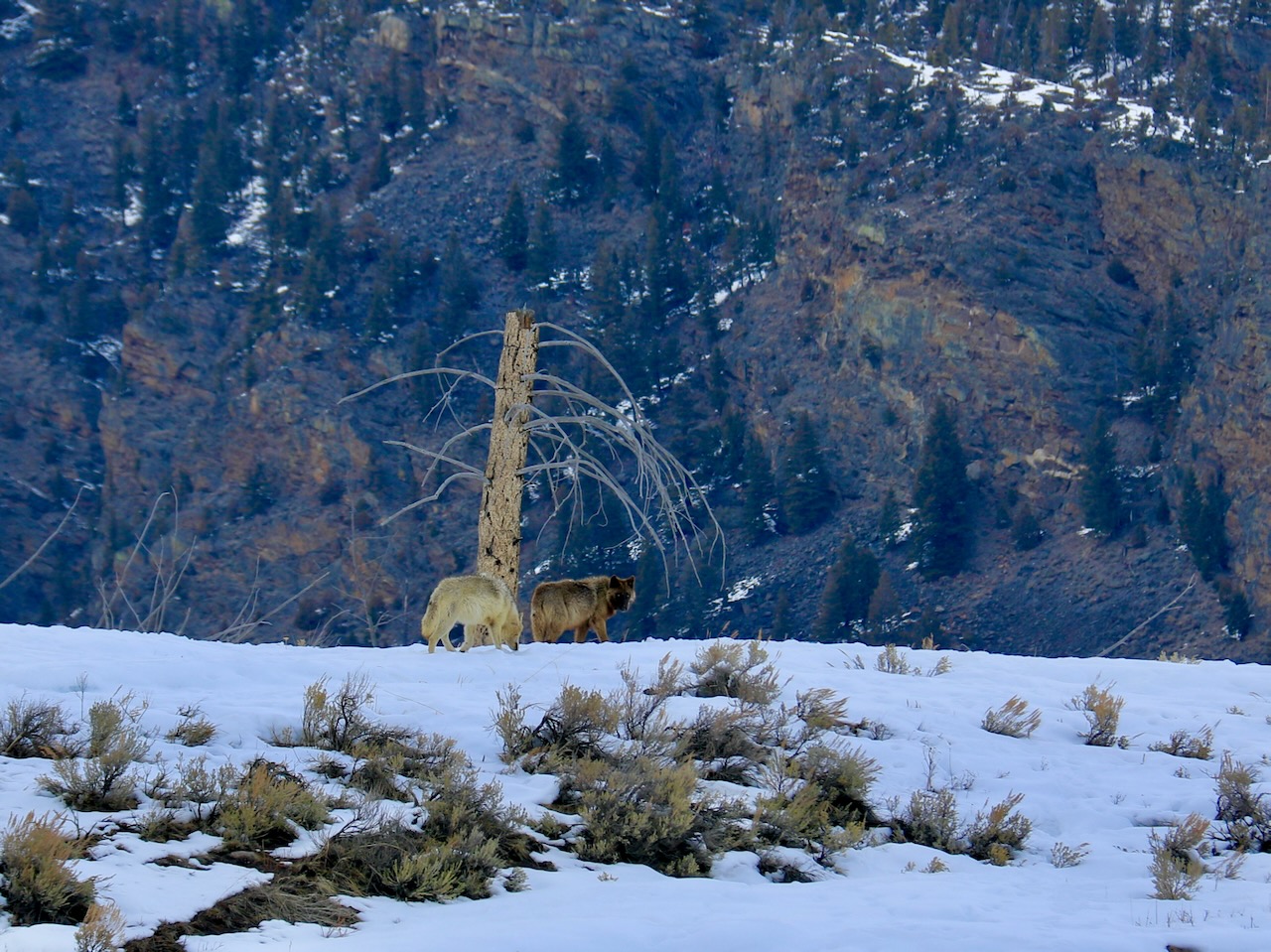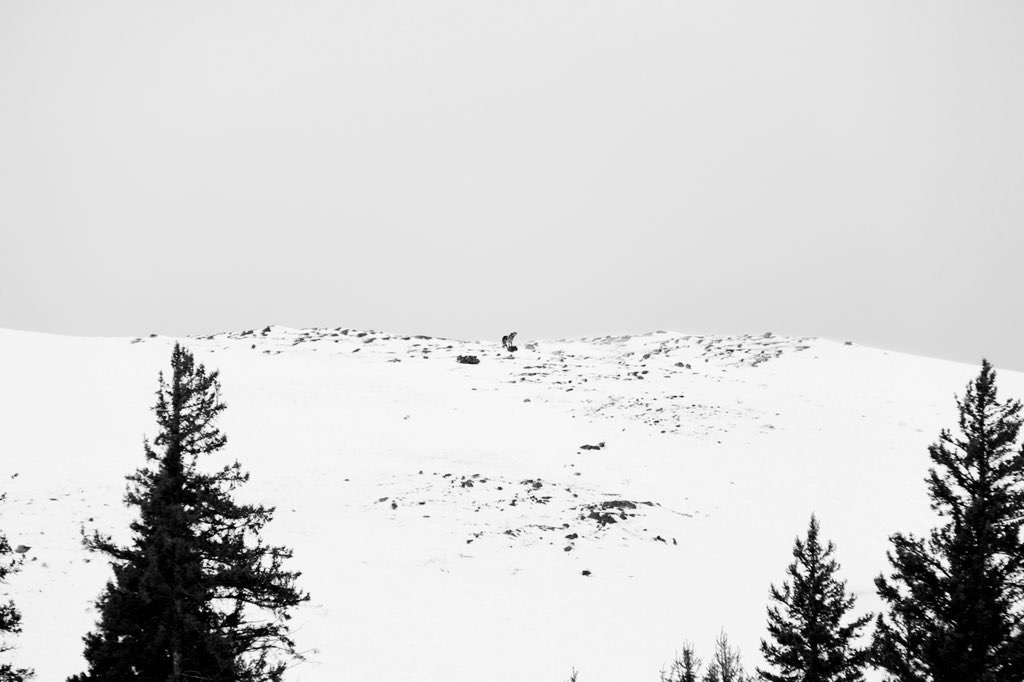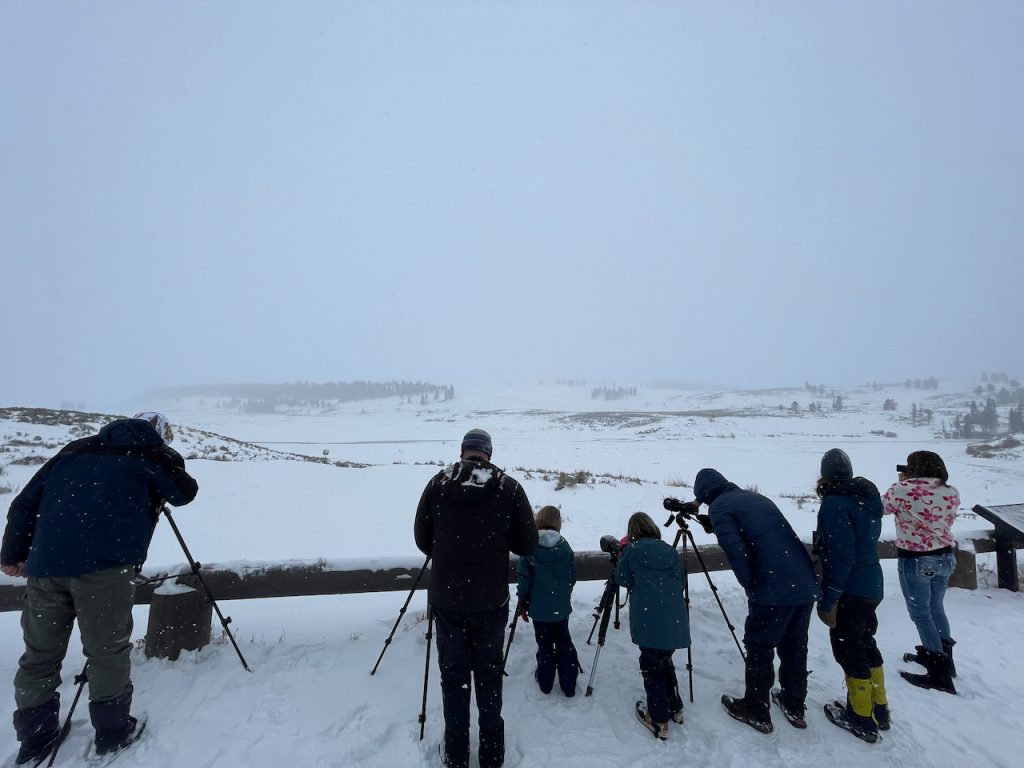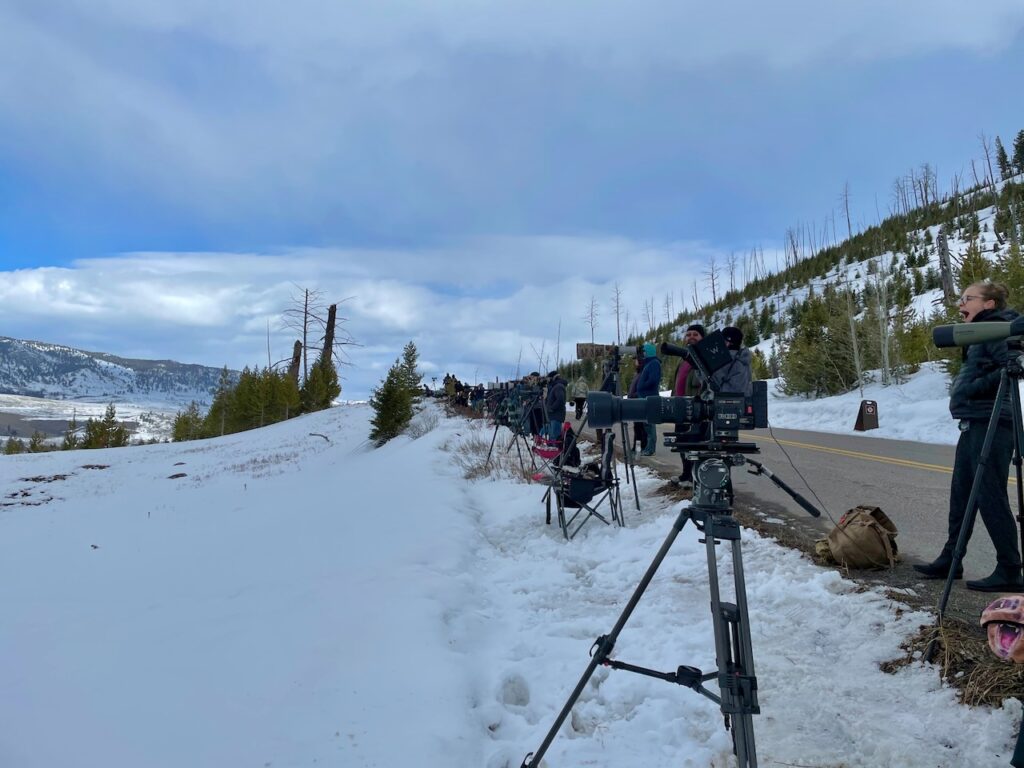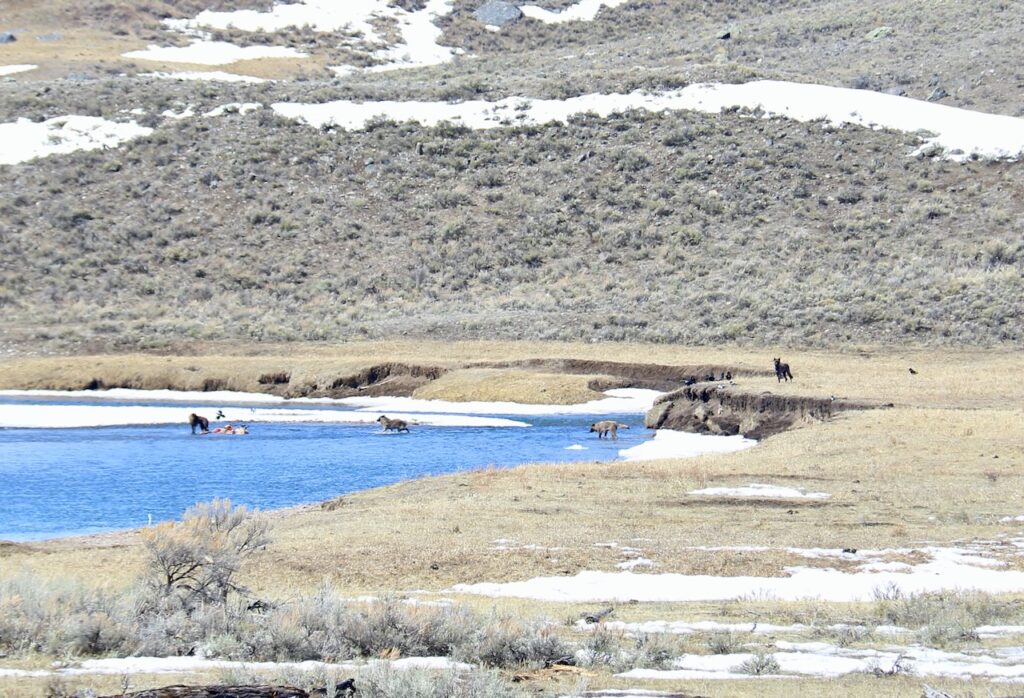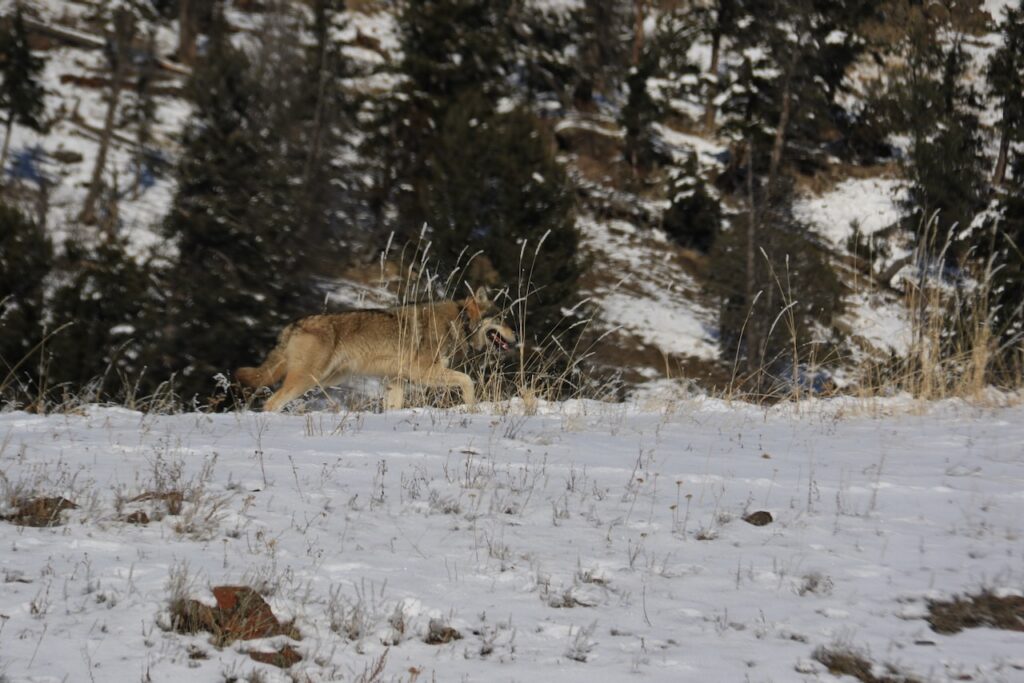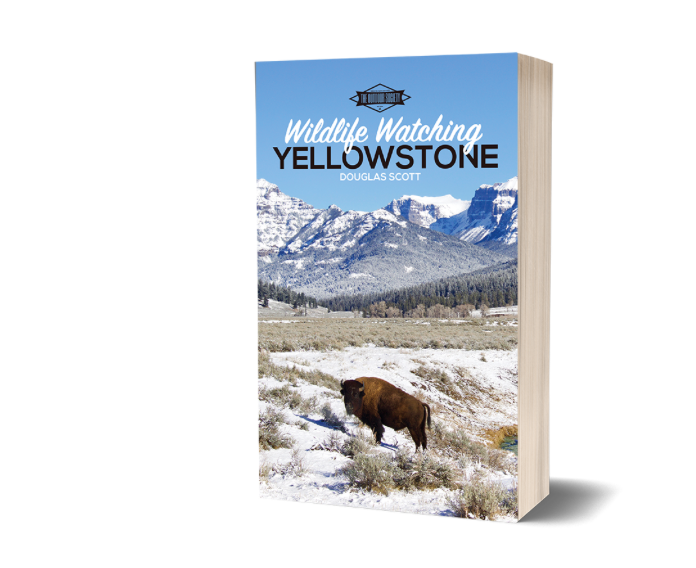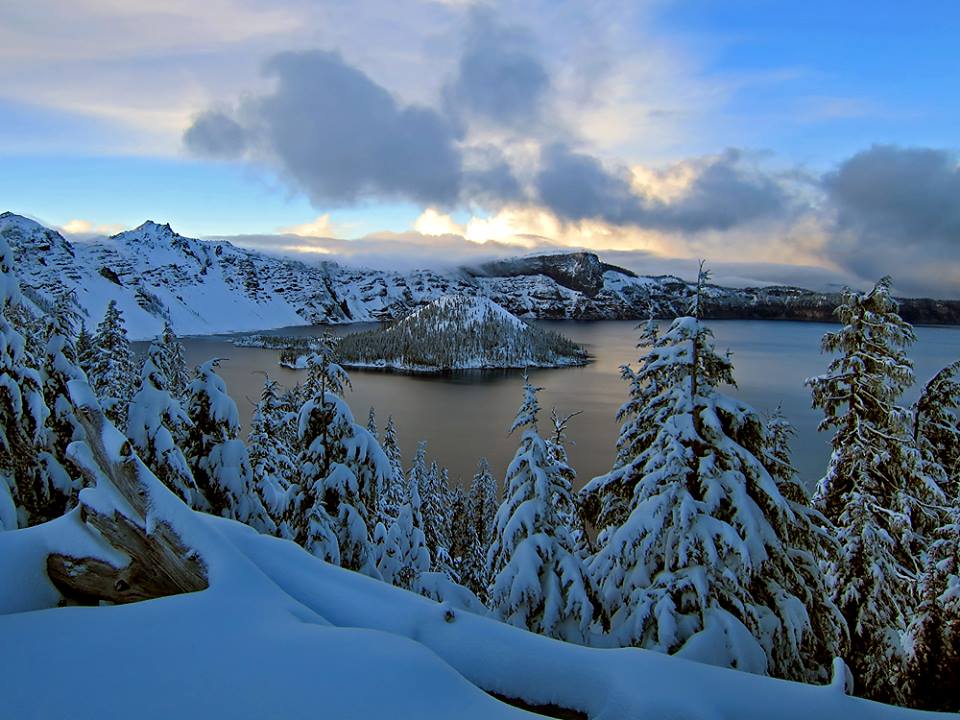As the first rays of dawn cast a golden glow over the vast landscapes of Yellowstone National Park, a sound echoes through the landscapes of the park, silencing all in earshot. The noise is the howl of a wolf and for those who venture into Yellowstone National Park, the mere prospect of hearing this brings excitement. Knowing that you may also be able to witness these elusive predators should be enough to quicken the pulse, and ignite a sense of awe that your wolf-watching dream has come true.
While we all hope to have an experience like this, the reality of wolf-watching in Yellowstone transcends mere fantasy; it demands an understanding of the intricacies of nature, the patience to wait for moments of magic, and the humility to witness wildlife on its terms. In this guide, we delve into the realm of Yellowstone’s iconic wolves, navigating the expectations that accompany the pursuit of these mysterious creatures. Go beyond the draw allure of the howl, into the heart of America’s first national park, where the wild and untamed spirit of the wolf awaits those willing to embrace the unpredictable beauty of nature.
Nevertheless, the reality of witnessing wolves in their natural habitat often differs from the expectations set by pictures and videos. In the subsequent sections, I aim to provide a realistic perspective, highlighting the challenges and offering valuable insights to manage expectations. This guide is designed to equip you with the knowledge needed to enhance your chances of experiencing the awe-inspiring moments that await those who venture into this captivating wildlife encounter. It’s essential to bear in mind that successful wolf sightings demand patience, a deep understanding of their behavior, and a touch of luck.
The Call of the Wild: Setting Expectations
Uncover the fascinating world of Yellowstone’s wolves with these intriguing insights. As of 2022, Yellowstone National Park was home to approximately 108 wolves distributed across 10 packs in 3,472 square miles park. Surprisingly to many, this number is eclipsed by the estimated 200 grizzly bears in the park. Despite the prevalence of online imagery of wolves, seeing one remains a rare and special event and needs to be treated as such. I don’t know how to say this any other way- be happy with any wolf sightings, no matter the distance.
If your Yellowstone visit is motivated by a desire to see wolves up close, it’s crucial to set realistic expectations. While stunning images and videos showcase the beauty of lone wolves or packs in breathtaking detail, the likelihood of seeing them without the aid of binoculars or a spotting scope is extremely low. Although some visitors will be lucky enough to enjoy a closer view of wolves, the typical sighting occurs at distances ranging from 0.5 to 2.0 miles away. On average, you should expect wolf encounters to fall somewhere in the middle of this range.
To enhance your chances of a memorable encounter, consider bringing binoculars or a spotting scope for an enhanced viewing experience.
Tools of the Trade: Binoculars and Spotting Scopes
Because wolves will likely be in the distance, you’ll need assistance seeing them. One of the most common ways visitors to Yellowstone see wolves is through someone else’s spotting scope. While this is common practice, please be aware that nobody is obligated to let you look through their setup. Always ask politely if they would mind if you look through their scope. If they do agree to let you look through their optics, never touch their setup, only take a glance, and always thank them.
The easiest way to boost your vision capabilities without relying on others is to use a spotting scope or a pair of binoculars. While I have a favorite brand of binoculars, I first want to refer you to this article from REI that will help you choose a good pair for your trip. Do not feel obligated to buy anything from REI, just take their advice and shop around for the best deal. I prefer Vortex over other brands, mainly for the quality of glass and affordability of entry-level binoculars.
As far as spotting scopes go, they are a next-level expense that is not a necessity for the average park visit. You’ll also need a tripod with a spotting scope, which is another expense. If you are in the market for a spotting scope, check out this article from Popular Mechanics.

The Role of Patience: Managing Expectations
Your wolf-watching experience involves understanding typical wolf behaviors. Often, wolf sightings involve observing them from a distance, where they may be found resting or sleeping for extended periods. While this serene scene may not meet the expectations of those anticipating dynamic activities like running, hunting, or howling, it’s essential to appreciate any opportunity to see wolves in Yellowstone National Park.
Managing expectations is key, and recognizing that wolves might exhibit inactivity from afar is part of the Yellowstone experience. To up your chances of witnessing more active wolf behavior, consider timing your visits during the early morning or evening hours. Wolves tend to be more active during these periods, making sunrise or sunset ideal times for observation. Plan your trips to coincide with dusk, dawn, or even darkness, adjusting your schedule to align with these natural rhythms.
Keep in mind that there’s no strict rule about wolf activity patterns. These timeframes provide a higher chance of catching wolves being more active. Despite these suggestions, wolves can surprise observers with activity at any time of day or season. I’ve seen a wolf chase prey in the heat of the summer, and walk along a river bank at noon, but those were lucky encounters. Tips like showing up in the early morning and late evening hours to know wolf areas will maximize your chances of spotting wolves during your Yellowstone adventure.
Respecting Wildlife and Wilderness Ethics
I have already written a detailed guide to wildlife-watching etiquette in Yellowstone National Park, so instead of rehashing it all here, I will instead provide the link. You can read the researched post by clicking here.
Hotspots and Habitats: Where to Find Wolves
Now that you know what to expect, where should you head to catch a glimpse of wolves in Yellowstone? While Lamar Valley and Hayden Valley are specifically mentioned in every post, it’s essential to go beyond these extremely generic suggestions. Both of those areas are far too vague and anyone who tosses them out as “where to go” may not be using recent knowledge, or giving specifics.
Wolf territories extend beyond the valleys mentioned above. For example, the Junction Butte Pack, occasionally seen in Lamar Valley, is more likely to be spotted near Hellroaring or by Slough Creek. The Wapiti Pack, associated with Hayden Valley, might be found near Canyon, the Firehole River, or even around Mammoth Hot Springs more often. Similarly, the Mollies, occasionally seen near Hayden, may roam towards Specimen Ridge and the Junction Butte territory.
While pinpointing a foolproof location is challenging, the Northern Range consistently emerges as a prime spot to watch for wolves. Throughout the seasons, your best bet for a wolf sighting in Yellowstone National Park is often along the roadside pullouts found between Mammoth Hot Springs and Pebble Creek Campground. If there are cars parked and spotting scopes set up, there is a good chance they are watching wolves.
In terms of seasonality, winter and early spring are the best seasons to spot wolves. The snowfall in higher elevations pushes elk and bison—the wolves’ preferred prey—to lower areas near park roads, increasing your chances of a sighting. Late spring and early summer can also offer decent opportunities, especially if a pack has a den visible in the distance. This is not a well-kept secret; many enthusiasts have observed the Wapiti Pack’s den near Slough Creek in the spring over recent years. If you find yourself frustrated by this detailed disclosure, rest assured that this information is widely known among Yellowstone visitors and is told to people who ask at the visitor centers.
Behind the Numbers: Seeking Out Individual Packs or Wolves
In recent years, the popularity of certain wolves and packs has dominated the wolf-watching experience. Every single wolf-watching encounter I have had over the last few years has had at least one person curious about what wolf pack we were looking at and what wolves we were watching. If this is something you are interested in, please check out the annual wolf report by Yellowstone National Park, and also talk to the wolf experts watching the wolves.

Interacting with the Experts: Ranger Programs and Educational Opportunities
When it comes to wolf sightings, keep an eye out for the many wolf-watching experts and enthusiasts frequently found at pullouts along the park’s roadways. Engaging with these knowledgeable individuals can significantly enhance your wolf-watching experience. The wolf researchers are often friendly and willing to share insights and information, as well as answer any questions you may have. Remember to be mindful of their time, as many are there for research purposes. Be aware that the wolf-watching enthusiasts and “professional” photographers can be hit or miss with their sharing of information. Some may guard this information.
You also might come across wildlife-watching guide services and their clients stationed with spotting scopes. Please respect their space and avoid approaching these groups. Their clients have likely paid a substantial amount for the experience you all are having. Doing this ensures a positive and undisturbed wildlife-watching environment for everyone involved.
Memories Beyond the Howls: Other Wildlife Encounters
Please remember that spotting a wolf in Yellowstone is not guaranteed, nor should it be an expectation. Witnessing a wolf is a distinctive and remarkable experience that should be cherished, regardless of the distance. With just a little over 100 wolves in the park, each sighting is a testament to their rarity.
If your interest in wolves stems from their successful reintroduction and thriving population, take a moment to appreciate the park’s bison as well. Yellowstone’s bison population has rebounded significantly from a mere 24 individuals in the past to over 6,000 today, marking a conservation success worth celebrating alongside wolf sightings.
While the desire to see a wolf is understandable, it’s essential to stay present and marvel at all of the diverse wildlife inhabiting Yellowstone National Park. Every species, from wolves to bison and beyond, contributes to the park’s unique and incredible ecosystem. Treat each wildlife encounter with equal awe and amazement, embracing the richness of biodiversity during your visit.
Just remember to adhere to all wildlife rules and regulations. Always stay at least 100 yards (91 m) away from bears and wolves, and at least 25 yards (23 m) away from all other animals, including bison and elk. Never feed the wildlife. Never approach wildlife. And always give them space to cross the roads and trails.
Become a Wildlife Watching Expert in Yellowstone
Embark on a captivating journey through the untamed beauty of Yellowstone National Park with my guidebook, “Wildlife Watching Yellowstone.” Immerse yourself in the awe-inspiring landscapes and learn the secrets of one of nature’s greatest spectacles. This guide is your passport to a world where bison roam freely, grizzlies majestically traverse the terrain, and elusive wolves play their part in the delicate balance of the ecosystem.
Whether you’re an avid nature enthusiast or a first-time explorer, this meticulously crafted guidebook will unlock the wonders of Yellowstone’s wildlife, offering insights into their behavior, habitats, and the best spots for unforgettable encounters. Let the pages come alive with vivid descriptions, stunning photographs, and expert tips, inviting you to witness the magic of the natural world in all its glory. Seize the opportunity to create lasting memories and deepen your connection with the wilderness – “Wildlife Watching Yellowstone” is your key to unlocking the wonders of this iconic national treasure.

